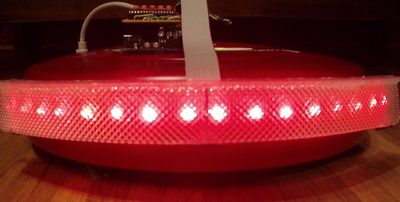 So given that I was reasonably impressed with our Scooba floor washing robot, I used the simple breeding technique of placing an order for a Roomba at irobot.com and lo and behold several days later a stork arrived with another bundle of joy. Well, I say stork, okay, okay, so it was a guy in a van, but the Roomba is pretty much a bundle of joy.
So given that I was reasonably impressed with our Scooba floor washing robot, I used the simple breeding technique of placing an order for a Roomba at irobot.com and lo and behold several days later a stork arrived with another bundle of joy. Well, I say stork, okay, okay, so it was a guy in a van, but the Roomba is pretty much a bundle of joy.While I was assembling the new toy storage unit from Ikea my 3 helpers had a great time disassembling the polystyreen packaging that came with it, to the cries of "Snow! Snow!" and so although the Ikea unit was ready, the boys bedroom needed a thorough hoovering before the unit could be installed. To my wife's annoyance I had purchased the Roomba, but not a vacuum cleaner. However the Roomba proved pretty adept at picking up the polystyrene, as well as keeping the children entertained during the process.
This Roomba comes with its own charging station; although I have yet to test its supposed ability to get to the charing station by itself. It was very helpful and it felt like much less effort to use than the Scooba. No need to fill it with water and cleaning solution; no cryptic warnings about overnight charging. Just charge and go. It also seemed to cope with rough terrain better than the Scooba, and was pretty effective at telling me (via recorded audio) when it got indigestion from scooping up the odd child's toy. Emptying it was pretty easy, although I made a few more messes before I completely understood the process, which I reccommend performing inside a plastic bag. Fortunately the Roomba was there to clean up those messes, and I think it avoided falling down the stairs, although I didn't actually see that bit ...
Anyhow, lots more testing (and ultimately pimping) to do here, but now I am fully equipped to do a couple of weeks Roomba hacking as part of the my online AI course that starts next week.






